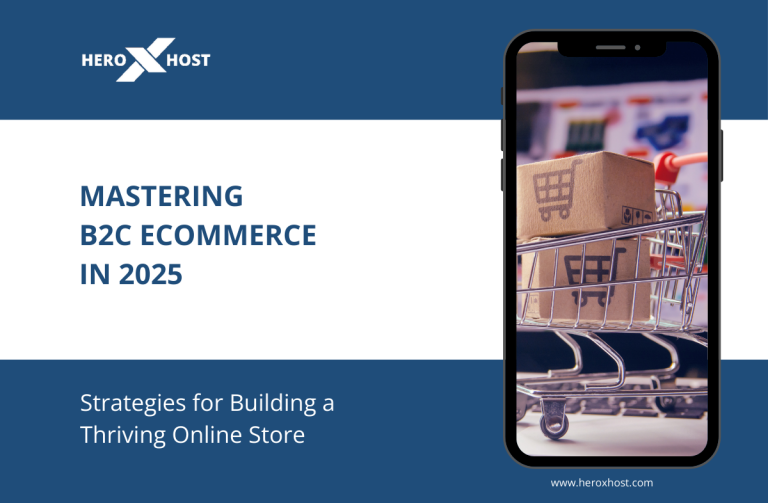Picture this: you’re at a crossroads. One path is safe and familiar. The other is new, risky, but full of opportunity. Which way will you go? One leads down a familiar, well-worn trail—that’s traditional marketing. The other winds through uncharted territory, full of data points and rapid experiments—that’s growth marketing.
So, which path should you take? Let’s dive into the fascinating world of growth marketing vs traditional marketing and discover what actually moves the needle in today’s business landscape.
Table of Contents
What Is Growth Marketing vs Traditional Marketing?
Think of traditional marketing as a symphony orchestra. Everything follows a carefully crafted score, with campaigns planned months in advance. Meanwhile, growth marketing is like a jazz band—constantly improvising, adjusting, and playing off the audience’s reactions in real time.
Traditional marketing focuses on brand awareness and long-term campaigns. It’s like planting oak trees—you invest heavily upfront and wait years to see the full results. Television ads, print media, and billboards fall into this category.
Growth marketing, on the other hand, operates more like a garden where you’re constantly testing different seeds. Some sprout quickly, others don’t take root at all. This approach emphasizes rapid experimentation, data-driven decisions, and measurable results across the entire customer journey.
The key difference? Traditional marketing casts a wide net, hoping to catch fish, while growth marketing uses sonar to locate exactly where the fish are swimming.
How Growth Marketing vs Traditional Marketing Approach Customer Acquisition
Traditional Marketing’s Customer Acquisition Strategy
Traditional marketing approaches customer acquisition the way you’d host a lavish dinner party—focusing on inviting as many guests as possible and putting on an impressive show. You send elegant invitations (advertisements) to everyone in the neighborhood, hoping the right people show up. The primary emphasis is on the top of the funnel—driving awareness and strengthening brand recognition.
This approach typically involves:
- Mass media advertising campaigns
- Brand-focused messaging
- One-way communication
- Long campaign cycles
- Difficult-to-measure ROI
Growth Marketing’s Customer Acquisition Revolution
Growth marketing approaches customer acquisition more like speed dating. You quickly test multiple approaches, gather immediate feedback, and double down on what works. The entire customer journey becomes your playground for optimization.
Growth marketing focuses on:
- Targeted, personalized campaigns
- Multi-channel testing
- Real-time optimization
- Measurable conversion metrics
- Rapid iteration cycles
Consequently, growth marketers can identify winning strategies within weeks, not months.
Key Differences: Growth Marketing vs Traditional Marketing Strategies
Budget Allocation Philosophy
Traditional marketing distributes budgets like a pension fund—steady, predictable investments with long-term horizons. Growth marketing manages budgets more like a venture capitalist, quickly shifting resources toward the highest-performing experiments.
Measurement and Analytics
Here’s where growth marketing vs traditional marketing shows its starkest contrast. Traditional marketing often relies on brand awareness surveys and general market research. Growth marketing, however, tracks everything: click-through rates, conversion paths, lifetime customer value, and cohort retention rates.
Timeline Expectations
Traditional marketing campaigns unfold like a novel, with careful character development and plot building over chapters (months). Growth marketing operates more like Twitter—quick bursts of content, immediate feedback, and constant adaptation.
Team Structure
Traditional marketing teams resemble corporate hierarchies with specialized departments. Growth marketing teams function more like startups, with cross-functional members wearing multiple hats and collaborating intensively.
Which Approach Delivers Better ROI: Growth Marketing vs Traditional Marketing?
The answer isn’t black and white—it depends on your business context, industry, and goals. However, data suggests some interesting patterns.
When Growth Marketing Wins
Growth marketing typically outperforms in these scenarios:
- Digital-first businesses
- Startups with limited budgets
- Companies targeting younger demographics
- Businesses with short sales cycles
- Industries where rapid iteration provides competitive advantages
When Traditional Marketing Remains King
Traditional marketing still reigns supreme for:
- Established brands with significant market presence
- Industries requiring trust-building (financial services, healthcare)
- Companies targeting older demographics
- Businesses with longer sales cycles
- Products requiring extensive education
The Hybrid Approach
Most successful companies today don’t choose sides in the growth marketing vs traditional marketing debate. Instead, they blend both approaches strategically. Think of it as cooking—sometimes you need the slow-cooked depth of traditional methods, other times the quick sear of modern techniques.
Modern Marketing Success: Blending Growth Marketing vs Traditional Marketing
The Foundation-Innovation Model
Smart marketers build their strategy like constructing a house. Traditional marketing provides the solid foundation—brand identity, core messaging, and market positioning. Growth marketing adds the smart home technology—dynamic optimization, personalization, and real-time adjustments.
Channel Integration Strategy
Rather than viewing growth marketing vs traditional marketing as competing forces, consider them complementary. Traditional channels (TV, radio, print) build broad awareness, while growth marketing channels (social media, email, content marketing) nurture and convert prospects.
Budget Distribution Framework
A balanced approach might allocate:
- 60% to proven traditional channels for brand building
- 30% to growth marketing experiments
- 10% to emerging channel testing
This distribution ensures stability while maintaining innovation capacity.

Tools and Technologies: Growth Marketing vs Traditional Marketing
Traditional Marketing Toolkit
Traditional marketing relies on established tools and platforms:
- Market research firms
- Creative agencies
- Media buying platforms
- Brand tracking services
- Public relations firms
Growth Marketing Arsenal
Growth marketing embraces a tech-heavy toolkit:
- Marketing automation platforms
- A/B testing software
- Analytics dashboards
- Customer relationship management systems
- Attribution modeling tools
The technology gap between growth marketing vs traditional marketing continues widening as new platforms emerge monthly.
Team Skills: Growth Marketing vs Traditional Marketing Requirements
Traditional Marketing Skills
Traditional marketers excel in:
- Creative storytelling
- Brand management
- Media planning
- Public relations
- Long-term strategic thinking
Growth Marketing Competencies
Growth marketers develop expertise in:
- Data analysis and interpretation
- Conversion rate optimization
- Customer lifecycle management
- Technical marketing stack management
- Rapid experimentation methodologies
Interestingly, the most valuable marketers today possess skills from both domains.
Future Trends: Evolution of Growth Marketing vs Traditional Marketing
The Convergence Pattern
The future doesn’t pit growth marketing vs traditional marketing against each other. Instead, we’re witnessing convergence. Traditional media becomes more measurable through connected TV and digital print platforms. Meanwhile, growth marketing incorporates brand-building elements as customer acquisition costs rise.
Emerging Hybrid Strategies
Forward-thinking companies experiment with:
- Performance-driven brand campaigns
- Creative optimization at scale
- Multi-touch attribution modeling
- Integrated campaign management platforms
- Cross-channel customer journey mapping
Technology’s Role
Artificial intelligence and machine learning blur the lines between growth marketing vs traditional marketing. These technologies enable real-time optimization of traditional channels while bringing brand-building capabilities to performance marketing.
Making Your Choice: Growth Marketing vs Traditional Marketing
Assess Your Business Context
Start by evaluating these factors:
- Company stage and resources
- Target audience preferences
- Industry dynamics
- Competitive landscape
- Internal capabilities
Pilot Program Approach
Instead of choosing sides immediately, consider running parallel pilot programs. Test both growth marketing vs traditional marketing approaches on smaller scales, measure results, and scale the winners.
Build Gradually
Begin with your core strengths, then gradually incorporate elements from the other approach. If you’re traditionally minded, add growth marketing experiments. If you’re growth-focused, invest in brand-building activities.
Measuring Success: Growth Marketing vs Traditional Marketing KPIs
Traditional Marketing Metrics
Traditional marketing typically tracks:
- Brand awareness levels
- Share of voice
- Reach and frequency
- Gross rating points
- Brand sentiment scores
Growth Marketing Measurements
Growth marketing focuses on:
- Customer acquisition cost
- Lifetime value ratios
- Conversion rate improvements
- Revenue attribution
- Retention rate optimization
Unified Measurement Framework
The most sophisticated marketers create unified dashboards that track both brand and performance metrics, providing holistic views of marketing effectiveness regardless of the growth marketing vs traditional marketing channel mix.
Conclusion: The Future Is Integration, Not Competition
Everyone’s busy arguing about growth vs traditional marketing—but they’re missing the real point. Today’s most successful companies don’t choose sides—they orchestrate both approaches strategically.
Traditional marketing builds the brand foundation that makes growth marketing more effective. Meanwhile, growth marketing provides the data insights that make traditional marketing more efficient.
Your marketing success depends less on choosing between growth marketing vs traditional marketing and more on understanding when and how to leverage each approach. The companies that master this integration will dominate their markets while others debate which path to take.
Remember, marketing isn’t about following a single playbook—it’s about writing your own story using every tool available. Whether that’s the steady drumbeat of traditional campaigns or the rapid-fire experimentation of growth marketing, success comes from knowing when to use each instrument in your marketing orchestra.
FAQs
1. What’s the difference between growth and traditional marketing?
Ans. Traditional marketing builds brand awareness through mass media over time. Growth marketing uses fast, data-driven experiments to drive measurable results.
2. Is growth marketing right for all businesses?
Ans. No. It suits startups and digital-first brands best. Traditional marketing still works well for established brands and long sales cycles.
3. Can I use both approaches together?
Ans. Yes! The smartest companies combine them—traditional for brand trust, growth for quick wins, and optimization.




